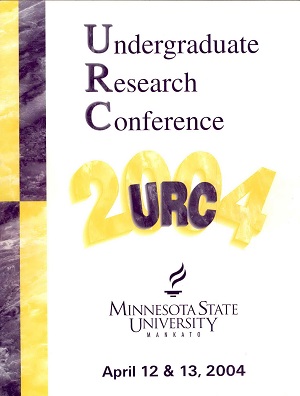Optimal Precipitation of Organotin Fluorides by Cation Exchange and Subsequent Conversion to Organotin Chlorides
Location
CSU 253/254/255
Start Date
12-4-2004 1:45 PM
End Date
12-4-2004 3:15 PM
Student's Major
Chemistry and Geology
Student's College
Science, Engineering and Technology
Mentor's Name
Brian Groh
Mentor's Department
Chemistry and Geology
Mentor's College
Science, Engineering and Technology
Description
Halogenated organotin compounds account for 10% of tin consumption worldwide. Known for their biocidal activity, organotins are components of agricultural fungicides, antibiotics and paint preservatives. Organotins have wide application and use in academic research as well as in industry. However, highly toxic halogenated organotins, often formed as by-products in reac tions, present an ecological threat to the environment. The by-product, typically formed in quantity equal to the desired product, usually becomes part of the chemical waste stream. The focus of this research is to develop a process to separate, remove and recycle organotin halides, specifically tributytin chloride, bromide and iodide (Bu3SnCl, Bu3SnBr, and Bu^Snl respec tively). This involves precipitation of the tin halide as tributyltin fluoride (Bu^SnF), filtration to isolate the tin fluoride and a simple reaction to convert it back into a useful reactant, tributyltin chloride. This process will benefit industry and academic research labs in two ways, (a) it will provide a simple and effective method for the separation of organotin halides from a reaction product mixture; (b) it will provide a cost efficient way to reduce the chemical waste stream, which directly benefits the environment.
Optimal Precipitation of Organotin Fluorides by Cation Exchange and Subsequent Conversion to Organotin Chlorides
CSU 253/254/255
Halogenated organotin compounds account for 10% of tin consumption worldwide. Known for their biocidal activity, organotins are components of agricultural fungicides, antibiotics and paint preservatives. Organotins have wide application and use in academic research as well as in industry. However, highly toxic halogenated organotins, often formed as by-products in reac tions, present an ecological threat to the environment. The by-product, typically formed in quantity equal to the desired product, usually becomes part of the chemical waste stream. The focus of this research is to develop a process to separate, remove and recycle organotin halides, specifically tributytin chloride, bromide and iodide (Bu3SnCl, Bu3SnBr, and Bu^Snl respec tively). This involves precipitation of the tin halide as tributyltin fluoride (Bu^SnF), filtration to isolate the tin fluoride and a simple reaction to convert it back into a useful reactant, tributyltin chloride. This process will benefit industry and academic research labs in two ways, (a) it will provide a simple and effective method for the separation of organotin halides from a reaction product mixture; (b) it will provide a cost efficient way to reduce the chemical waste stream, which directly benefits the environment.




